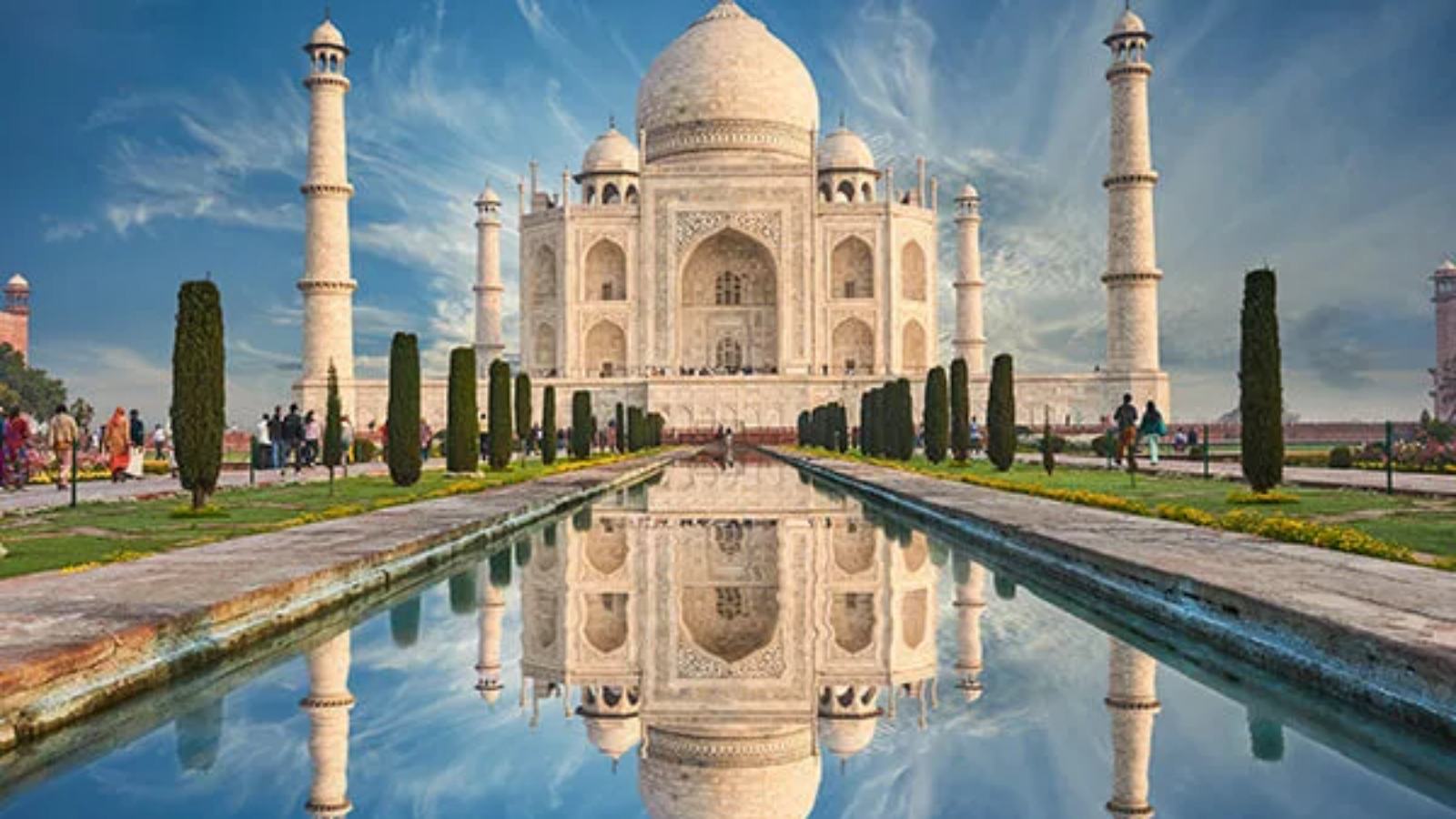Agra’s Yamuna River is home to a stunning Love Monument known as the Taj Mahal, a one of a kind mausoleum that resembles a white silvery castle. It has been rightfully termed as one of the wonders of the world as it is considered a marvelous representation of Mughal architecture as well as a symbol of love amongst millions across the globe. The love interconnected with this artwork is quite fascinating as the delicate tomb was built by Shah Jahan for his wife, Mumtaz Mahal. So as you can see, if you explored the story of Taj Mahal, you would be stepping into a time travelling, love-filled adventure.
Taj Mahal History:
This construction took around twenty years to complete and took place during the Mughal Empire from 1632 to 1653. It is also referred to the epitome of Mughal architecture. Jean built Ustad Ahmad Lahori also worked on the design of the Taj Mahal which was an integration of Islam, Indo-Islam and Indian architectural designs. The Taj Mahal is bordered with ewer reflecting pools, a symmetric garden and a geologic content that gives a trippy feel of deluxe design along with balance symmetry.
The Taj Mahal was built based on the love Emperor Shah Jahan held for a woman named Mumtaz Mahal. She died while giving birth, which prompted the emperor to look into constructing an astonishing piece of architecture. This structure, estimated to be an icon of beauty, would encompass everything the couple had; thanks to the unyielding love they had for each other.
Building the mausoleum must have been a fascinating job. The neck turning domed palace situated in the middle towers over everything while its impacted column holders along with decorated marble detailing define its structure. In short, the Taj Mahal combines mass exceptional construction with detailed craftsmanship with a style that is an attraction in itself.
Most striking would have to be the luxuriously pearlescent color the Taj Mahal exudes, and how that color changes during golden hour of each day. That warm golden daylight, a rosy soft hue at dawn and midday a pale white dome surrounded by the moonlight. One view of the Taj, to say it with pride, is simply captivating. The Taj Mahal has been hailed and revered as a symbol of perfectly aligned lovers.
The Taj Mahal Complex:
Not a single structure but a site featuring the central tomb, two side mausoleums, and a mosqu, along with a jawab ( a structure built to complement and be the opposite of the mosque). The calm encircling greenery with the gardens, fountains, straight driveways and flowerbeds is beautifully done so that the visitors can contemplate the word of wisdom that the monument speaks of and understands the history behind it.
Conserving the Image:
With time, the basement of the Taj Mahal and the dome have dealt with natural degenerates and environmental pollution. In efforts to tackle this problem and protect its dignity, restoration processes have continued time after time. People making a trip to the city are now obliged to obey several rules in order to avoid damaging the building.
Travelers around the globe have an unexplainable desire of visiting the Taj Mahal because of its outstanding beauty and history it possess. The stunning architecture of the Taj creates an ambiance of deep love in the hearts of people which captivates them to the extent that they get lost in their dreams. It’s a representation of love won through architecture. The stories to time tell describes the spirit of love and adoration with which the Taj was constructed setting the walls ablaze with passion and beauty, revealing the timeless elegance of the monument. Stepping into India without viewing the magnificence of Taj Mahal is like brushing through history. I believe one can find love that is the purest in the world by seeing the Taj.


Add a Comment